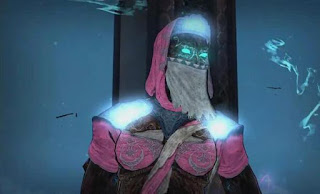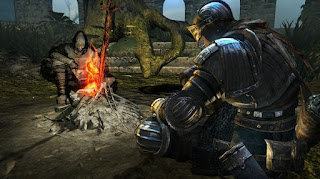Throughout last week’s discussion of the Vedic traditions, and the explanation of the “Great Gob of Godly Goo,” I was often reminded of Game of Thrones. Now, to be honest, lots of things remind me of Game of Thrones, but specifically, I was reminded of the religions depicted in the novels, and their similarities to what we were studying. I might not be the first person who has talked about the various religions George R. R. Martin has conceived, but hey, I need to up my “cool” quotient with this blog, and I think some “cool” pics of dudes with swords will help.
And what post about Game of Thrones would be complete without a picture of Tyrion Lannister?
 |
| From www.storyepic.com |
Before we begin, I must bring up a quick caveat: I have not seen the TV show. I’m a nerd; I’m a geek. I’ve only read the books. With that being said, I find that the religions in the Game of Thrones universe are one of the most fascinating and intriguing aspects to its story. More than the executions, the politics and the deceptions, the religions of the Seven (New Gods), the Lord of Light (R’hllor), and the Old Gods need, nay, deserve more attention in popular culture.
So, this is my good deed for the day.
First off, let’s examine the Seven Gods as mentioned by “The Faith.”
 |
| The Seven aspects of God... From gameofthrones.wikia.com |
The Father - Represents judgement
The Mother - Represents motherhood and nurturing
The Warrior - Represents strength, courage and victory
The Maiden - Represents innocence and chastity
The Smith - Represents crafts and labor
The Crone - Represents wisdom
The Stranger - Represents death and the unknown
Each one of these Seven is said to be merely an aspect of a singular deity who happens to take on one of these forms during certain occasions. Throughout the novels, the explanation of this doctrine is said to be akin to light reflecting off a diamond: One can only see the light from one facet shining at the moment, but there is a completely whole diamond behind it. These New Gods are called “New” because they were the gods worshiped by the conquerers who came to the land of Westeros thousands of years before the start of the novels. The Seven are worshiped in large cathedrals with their respective statues on display and with public festivals in their honor, and the Faith itself is run by priests, nuns and it even has (in the later books) a military.
As we discussed in class, the Vedic idea of "Maya" using "Brahman" to give shape and difference to reality (and gods) is very similar to this "separation" that the Seven have. In addition to this Vedic connection of the "gods" truly being aspects of one "god", there is also a connection to the Christian idea of the Trinity. Although the Game of Thrones more than doubles the number of moving parts, in essence, there is almost no difference between the theological philosophy of the Seven versus the division of the Father, the Son and the Holy Spirit.
A quick aside: One of the main characters in the book ends up in an assassin’s cult that serves the God of Many Faces (some say that this god is, in reality, the Stranger from the Seven). This new god is explained to the character by the leader of the cult who says that the city is full of foreigners and numerous strange faiths, so in a syncretic practice (my words, not the character's) they eventually developed a god who is, more or less, every god and thus, a faceless and singular deity. Perhaps it is my ignorance of the nuance of Hindu traditions, but this new role of the Stranger from the Seven reminds me of the Vedic concept of depicting gods with several heads and arms in order to depict their variety of duties, powers and aspects.
 |
| From wikikrishna.com |
 |
| Pumpkin carving of the "Faceless God", with a face? ... From Pintrest.com |
It is also interesting that the servants of this "Faceless God" deal with death, but in such a way that it treats death very similarly to the idea of a "Kalpa" turning; destruction is a new beginning and is a gentle translator that ends an old world and transitions to a new one.
Now, let’s change gears and look at R’hllor, the Lord of Light.
 |
| Azor Ahai is the religion's reborn savior.... From comicfan22.wordpress.com |
 |
| The slogan of the religion... From housesigilsandmottoes.tumblr.com |
This focus on the divine light fighting and overcoming the maleficent darkness sounds very familiar to Zoroastrianism; it should come as no surprise that within this darkness there are evil things that are intent on destroying the world of Man. In addition to the "darkness" dynamic, this R'hllor religion is similar to the early Christian practice of depicting dark and evil creatures that are controlled by a stronger and more evil "other" (typically the Devil). In fact, George R. R. Martin takes this idea to the extreme by calling those who bring about this darkness the "Others."
This fire religion grows exponentially in the series and often wins its converts by painting a stark black and white difference between their Lord of Light and everyone else's sinful and evil traditional practices. The priests of light are extremely intolerant of other religions, and do indeed imply and sometimes outright state that the deities of non-believers are demons or servants of the coming darkness. This attitude eerily echoes the practice of both the early Christian movement and the later Christianized Roman Empire and their persecutions and demonizations of non-Christians and their practices. As stated before, like its real-world counterpart in Christianity, this "light/fire" religion is a swiftly growing faith throughout the books, first showing up as a strange and foreign practice in the second book of the series, and then becoming one of the premier and influential faiths by the end of the fifth. Again, as mentioned in my last blog post, the trope of goodness overcoming evil through a champion of the light is a common theme, and even this fictional light religion is no exception. “Azor Ahai” is the champion of light for this faith, and it is said that he shall be reborn before the end of days and lead the world against the armies of evil. So far, no one has claimed this title “for real” in the books, although there are certainly many candidates.
Also, the priests of this religion stare intently into fires and believe they can read the future within the flames. They also believe in human sacrifice by burning important and influential people at the stake. It's a pretty intense faith.
Okay, one more R'hllor picture (Obviously, this is my favorite religion in the books...)
 |
| From www.keepcalm-o-matic.co.uk |
Finally, the "Old Gods" of the story are so named because they were the original deities worshiped in the world. Although adherents are fairly uncommon in the series, there is still a thriving yet small group of people who worship these "Old Gods,” and these ancient deities are represented by trees and other “wild” images in the woods. These practices were eventually stamped out by the newer religion of the Seven (The New Gods), and perhaps I’ve had some inception-like influence with all of the Pan imagery this week, but I can’t help but think that this idea of an older, “wilds-worshiping” tradition being supplanted by a more codified, Empire-like religion is something that has a real historical precedent with the early Roman pagan religions threatened by the newer and more Christianized Roman Empire after Constantine the Great.
("Unrelated" music video, but it deals with woods/Pan imagery and this post is fairly wordy anyway. Also, it references the Devil, and this is a History of Satan class.)
There is one more major religion depicted in the books that also deserves attention, but, sadly, I don't have the time or room to explore it. It's interesting though! It deals with drowning people, and it has a sea god, and the people who practice it live on the beach and drink seawater! Cool stuff.
Ultimately, I find it exhilarating that ideas spread thousands of years in the past are still referenced and continue to influence so much in this modern era. Hopefully, with this attitude, these ideas can continue to be preserved and with a little bit of luck, these historically and culturally important philosophies won't go the way of the "Old Gods" in Game of Thrones.
Speaking of the "Old Gods", perhaps Hipster Jon Snow says it best:
By the way, if you are so inclined, here are some good websites that give a more general overview of the religions discussed (plus the one I didn't have time to cover!)






